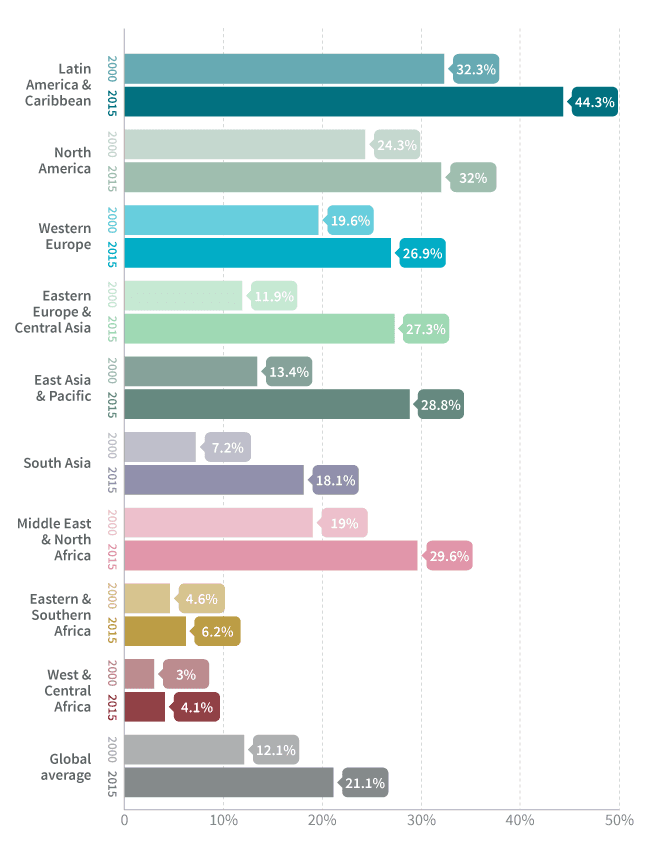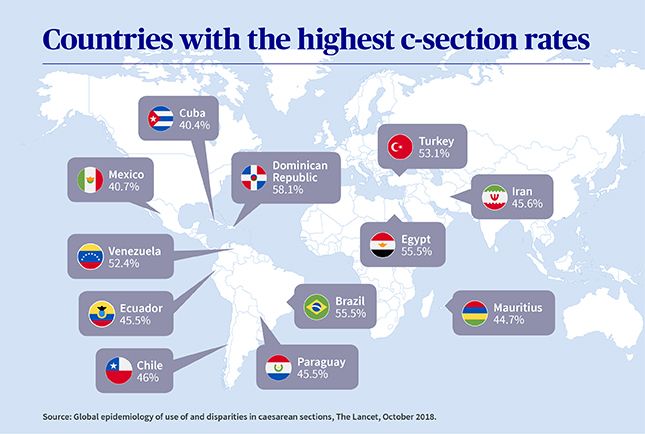Caesarean sections are increasing around the world. One in five babies are now born by C-section 1 (caesarean). And depending on where you’re living, there are huge disparities between and within countries when it comes to C-sections, highlighting both overuse and underuse due to inequalities of healthcare. We’ve taken a closer look at why this is and what you should think about if you’re expecting, to help you make the best choices for you and your baby.
What is a C-section?
It’s an operation to deliver your baby through an incision in your abdomen. It’s usually carried out under local anaesthetic – so you’re awake, but you don’t feel any pain. A screen is raised so that you don’t see the operation, and it usually takes around an hour. Once your baby is out, you should be able to hold them almost straight away while you’re being stitched up.
A C-section is a major operation and the recovery time is generally longer than for a routine birth. Because of this, you’ll spend a few nights in hospital.
The majority of C-sections are unplanned emergencies when the baby needs to be delivered urgently. Some C-sections are pre-planned – usually because of complications or risks during the current, or a previous, pregnancy. Sometimes, women have C-sections for non-medical reasons as a matter of personal choice.
Whether a pre-planned C-section is due to medical reasons or not, they are generally called ‘elective’ C-sections. It’s worth noting that ‘elective’ doesn’t always mean it was the mother’s choice, it could be down to the beliefs and attitudes of the healthcare providers and societies, or a non-urgent medical reason.
Different ways of giving birth
- Routine birth – your labour begins either naturally or is induced and your baby is delivered through the vagina.
- Assisted birth – a suction cup or a pair of forceps are used to help deliver your baby.
- Emergency C-section – if your baby needs to be delivered urgently through surgery.
- Elective C-section – your baby is delivered during pre-planned surgery – usually for medical reasons.



